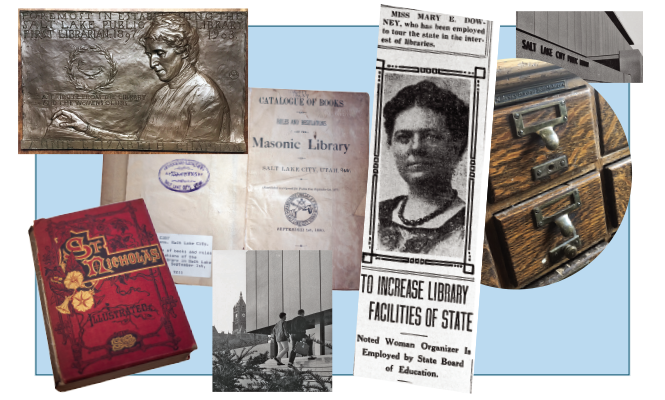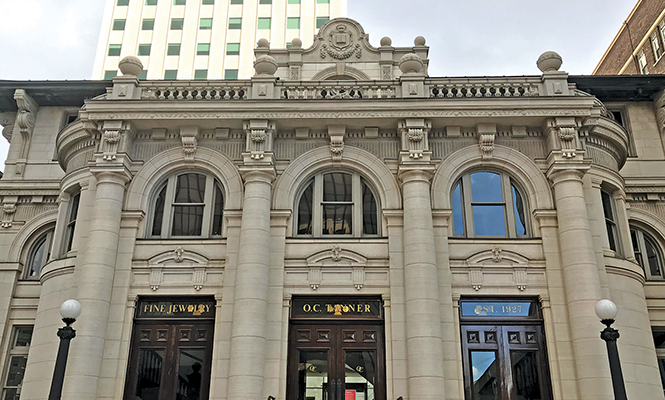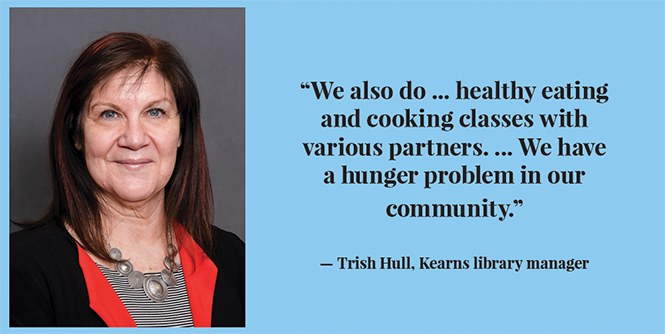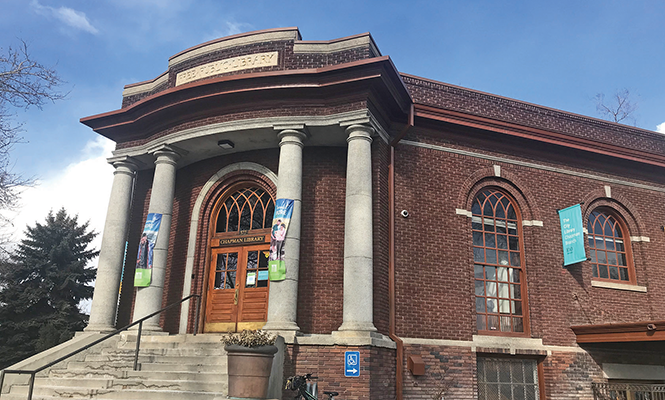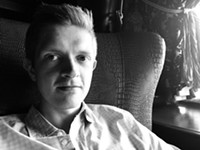They stand as fixtures in your neighborhood and may even be a recurring destination for your family. Whether sleek and large or historic and unassuming, public libraries have undergone many transformations, inside and out, over their extended history.
But their essential role as a community center has been consistent and remains vibrantly alive. The story of public libraries in Utah is one of clashing interests, creeds and classes slowly finding place for one another in a project of public service.
That effort extends far beyond the accumulation of books and other resources for knowledge. As teacher and scholar R. David Lankes articulated in a 2012 keynote address to librarians in Syracuse, New York: "Bad libraries build collections; good libraries build services; great libraries build communities."
What of the libraries here in Salt Lake and the communities they help to build? Answers suggest themselves in the user feedback that flows into our city and county branches every day. "The library has changed my life," one patron wrote in an email to library workers. "I used to hate reading, but now I love to read."
Another comment remarked on what a boon the library's community services had been for a mother and her children. "These programs help me be a better mom," the woman wrote, "I'm able to supplement my children's learning with a variety of online programming, live classes, art, activities, music, books and more, thanks to the amazing library staff."
This didn't happen in a vacuum. Libraries operated as private clubs and fee-based companies in colonial times. And it wasn't until the 19th century that the public library as we recognize it today began to take shape, most notably with the Boston Public Library's opening in the early 1850s. While the public library movement gained national traction during this period, another more unique journey was playing out here in the Beehive State.
First Editions
From the arrival of the Mormon pioneers until the time of formal statehood, many Utah library ventures came and went. For The Church of Jesus Christ of Latter-day Saints' stake units and individual Mormon homes, then-president Brigham Young and his colleagues recommended in an 1847 epistle to build up libraries containing "every valuable treatise on education—every book, map, chart or diagram that may contain interesting, useful and attractive matter to gain the attention of the children and cause them to learn how to read."
Also present at that time was the Seventies Library, an import from the Mormon settlement in Illinois that was primarily used for missionary work.
A Territorial Library for the Legislature was established by a federal government grant in the early 1850s and operated as a public library out of session. And after the completion of the transcontinental railroad in 1869, the growing population of non-Mormon residents worked to build up their own libraries, from the reading room organized by the Ladies Library Association at the First National Bank Building to unsuccessful efforts to establish a secular public library in Ogden.
But none of the aforementioned libraries survived very long, due to either their limited use or lack of funding.
An obstacle at that time was the tension between Latter-day Saints and non-LDS residents, particularly when it came to the LDS practice of polygamy. No public library had a chance of taking root in a society so at odds with itself. "Each segment of the community feared that the other would control the public institution," explained library historian Suzanne M. Stauffer in an unpublished 2004 dissertation.
As a result, literary and cultural pursuits were advocated separately by individual women's organizations, such as the Mormon Relief Society and the non-Mormon Blue Tea Society. The latter organization eventually went defunct, but it spawned the Salt Lake City Ladies' Literary Club, which set about reaching greater numbers of people by assembling traveling libraries. This organization would be critical in the development of what would become the Salt Lake City Public Library.
As the only early library to survive into Utah's statehood, Salt Lake City's library system originated from a small collection of books gathered by the Ladies Library Association in the early 1870s. These books were later acquired by the Grand Masonic Lodge of Utah and made available to readers as the Pioneer Library in 1877.
Funding was always a struggle, but the Pioneer Library received decades of support from the Ladies' Literary Club. In addition, the Literary Club successfully collected signatures to levy a tax for Utah's first publicly funded library during the state's first legislative session in 1896. A library board was assembled the following year and by 1898, the library had been fully transferred to Salt Lake City, occupying the top floor of the City and County Building.
By 1905, it had found a more permanent location at 15 S. State Street—now O.C. Tanner Jewelers—through the support of Tintic mining magnate John Q. Packard (at the urging of the Ladies' Literary Club). This building housed the city library until 1964, when it relocated to what is now the Leonardo Museum at 209 E. 500 S.
It was in the years following 1890—upon the first announcement by The Church of Jesus Christ of Latter-day Saints that their practice of polygamy would cease—that LDS and non-LDS communities in Utah began to integrate to a greater degree. Utahns, and particularly Utah's women, were finding spaces to work together in civic and political causes, and libraries proved to be a broadly shared community interest.
The leadership skewed in favor of non-Mormons, but the work of establishing public libraries in Utah was nevertheless a vehicle for diverse groups to work together in a non-sectarian cause, as Stauffer explained in a 2005 article for Library Quarterly. "Women's united, organized activities were vital to the success of these efforts," she wrote, "Working together regardless of religious affiliation, women's clubs initiated the library movement in their communities, raised funds through bazaars and other means, solicited donations of materials, served on boards of trustees and other committees, staffed the libraries and campaigned for support of legislative resolutions."
With the absence of philanthropic or governmental support, this activity on the part of women's organizations was filling a gap that other Western states were also facing when it came to the library movement. Such conditions began to shift in Utah during the first two decades of the 20th century as librarianship became more professionalized and libraries came to be more closely associated with schools.
Some towns developed libraries through the Library-Gymnasium Act of 1907, which incentivized the building of combination centers to serve the educational and recreational pursuits of the young. Others applied to the Carnegie Corporation in New York, which provided grants for the construction of thousands of library buildings around the world during this period and which ultimately built 23 in Utah between 1901 and 1919. In both cases, the influence and decision-making were filtering over into the exclusive domain of elected officials and local men's clubs.
Since the public library was supplementing the needs and aims of schools, Utah leaders increasingly decided that it would operate best when administered under a special authority of the state. Thus, in 1911, the oversight of the library was designated within the purview of the State Board of Education. A tax-supported public library was becoming a nearly ubiquitous feature in city planning projects, but there remained smaller and more isolated communities in the Beehive State whose needs were going unmet.
Addressing those needs was a major goal of Mary E. Downey, who came to Utah to serve as the state's Library Organizer from 1914 to 1921. "It is the birthright of every child," she declared in the Chautauquan Daily, "to have access to a good collection of books, just as it is [their] birthright to have a free education."
Working with local library boards, city officials and women's groups, Downey advocated for the creation of a county library system and the absorption of smaller mobile collections into permanent libraries that were built up all around the state. Her joint work with countless individuals and organizations led to the enactment of the County Library Act of 1919, which opened the way for library services to become available within every county of Utah.
With the relative permanence of the public library established in the early 1900s, the ensuing century leading up to today shifted to a period of adaptation, innovation and experimentation.
Multimedia
Quinn Smith is the Salt Lake City Public Library's assistant director of marketing and communications. Libraries hold a special place in her heart, she said, as her mother worked in a library, and she cherishes memories of performing in stage productions at the Leonardo building back when the city library still resided there.
"It's pretty incredible when you think about it, how many roles the library plays," Smith said. "When they find out [all of] what we do, I've yet to have a conversation with a patron when they aren't blown away by our offerings and the treatment by our staff."
Whether one needs assistance with email or resume preparation, meal recommendations or learning a language, the library can connect a patron with what they need. For caregivers of loved ones with dementia or Alzheimer's, there are memory kits that help to stimulate conversation and practice memory retention.
For children, there are digital-first programs such as virtual Story Times (averaging 700 views per month) and a regularly-updated recorded service called "Phone-a-Story." And with more than 800 participants during its January run, "Adopt a Mini Pet"—which provides children with a stuffed animal in a carrier to prepare them for pet ownership or to serve as a substitute—was such a success that there are plans to make it an annual program.
For teen patrons, the city library system offers arts and crafts activities, online tutoring, volunteering programs, curated book recommendations in its "Lit Loot" kits, a Teens Talk panel series to lead discussions on subjects of personal interest and clubs like Alphabet Soup for LGBTQ+ youth and allies.
For older patrons, the library offers lecture series, a gardening seed library and book clubs, as well as a massive collection of digital reading materials and audiobooks for those who prefer the comfort of their own homes. In total, Smith reports that roughly 785,000 e-media materials and 2.32 million physical items were circulated last year at the Main Library—a facility that is known for its architectural beauty—and its sister branches.
Smith is proud of the fact that, starting last September, the library worked with Salt Lake City to expand free parking at the Main branch's downtown lot from a half-hour to two hours. And for any and all who come to them, she stated, the library doors are open and you can stay all day if you wish.
This was a point also made by librarians Katie Weeks and Christine Koldewyn at Poplar Grove's Chapman library branch, located at 577 S. 900 West. There are few remaining places in the world besides the public library where visitors can linger, access a computer, read and/or use a restroom, without any expectation of making a purchase. "We strive to meet people where they are," Weeks said.
Koldewyn agreed, stating that she particularly enjoys her contact with their regular patrons and with teens. Operating within the smaller parameters of the 1918-built Chapman building—a Carnegie-funded library that is said to be haunted—they strive to offer unique experiences for their patrons, including a ghost hunt during the Halloween season.
If the Salt Lake City Public Library teems with resources for its patrons, the county's library system similarly has no shortage of offerings in what they do as a partner organization to the city and university systems. Trish Hull, manager for the county's Kearns library branch, works with the University of Utah to feature a six-class Journey to Health course on healthy cooking and shopping, which utilizes the kitchen space in the Kearns library building to create meals.
Each course is capped at eight participants, with multiple course rotations each year. "We also do other healthy eating and cooking classes with various partners," Hull added.
With the assistance of the Utah Food Bank, the Kearns branch is currently among six county library locations (along with four city library branches) that offer Kid's Café, a service that provides sacked snacks for kids up to age 18. Hull said the Kearns location alone serves between 45 and 90 children each day. "We have a hunger problem in our community," Hull said.
Along with its partnerships, the county library system offers a vast assortment of services for the public. Select branches have "Create Spaces" that provide tools like sound-recording studios, vinyl cutters and laminators, sewing machines and 3D printers. Kearns' Create Space opened last May and, by the end of December, it had served 1,773 people, Hull said. Those patrons ranged from music teachers to people of every age recording podcasts and at least one retiree who used the space to produce curtains for their trailer. "It is the most diverse group of users you can imagine," Hull said.
The county's "Library of Things" allows patrons to check out such items as telescopes (1,241 users last year), Chromebooks (1,178 users), Wi-Fi hotspots (3,252 users), "Storytime-to-Go" kits (11,618 users) and even "Preserve the Memory" digitizing equipment for old videos.
Teens can find assistance applying for a food handler's permit, a driver's license or taking a college admissions test, resources for creative endeavors and for book recommendations. There are popular children's programs like Story Time, which hosted 5,600 children in person and 11,484 online last year, and O.W.L. (Outstanding Wizarding Levels) Camp, which has a maximum capacity of 825 registered kids. Adults can access varied resources in auto maintenance, family history and business/nonprofit startup. They also have access to countless academic journals.
According to Matt McLain, the country library's associate director of community engagement, patrons collectively checked out more than 11 million items last year. "We love the fact that we have really broad collections that people can use," he said.
Coupled with the interaction that librarians provide on a day-to-day basis, the influence of the public library as a community center remains strong. "I think public libraries can make a good case for being the heart and soul of our society," said longtime Utah resident Joseph Peterson.
Library roots run deep and extend in many directions but draw their greatest strength from the people who use them. And their role as a gathering place is more apparent today than in the days of the Ladies Literary Club or Andrew Carnegie, as evidenced in the buildings themselves, which have expanded in size and now offer space to the variety of activities housed within.
With National Library Week under way (April 3-9), Americans can take time to celebrate libraries and the contributions of library workers. As long as there exists minds that hunger for knowledge and residents willing to work together, these community hubs will always have an ongoing purpose.
Special Thanks: Michael Dillman, Jeri Gravlin, Bobbee Hepworth, Matt Petterborg, Wayne Wiegand, Cherie Willis.
More by Wes Long
-
Salt Lake's modern tree canopy is a living legacy of the peoples of Utah.
Life in the Slow Lane
- Apr 17, 2024
-
40 Years of City Weekly—Volume 35: 2018 to 2019
City Weekly Rewind
- Apr 17, 2024
-
40 Years of City Weekly—Volume 34: 2017 to 2018
City Weekly Rewind
- Apr 10, 2024
- More »
Latest in Cover Story
Readers also liked…
-
Forget the family pedigree—Robert F. Kennedy Jr should not be the next president of the United States
Trojan Horse
- Jun 21, 2023
-
Women decry harassment and toxic culture at St. George auto dealership
Men at Work
- Oct 11, 2023



